DESIGN MAGAZINE: Transforming Urban Spaces with Kongjian Yu’s Sponge Cities
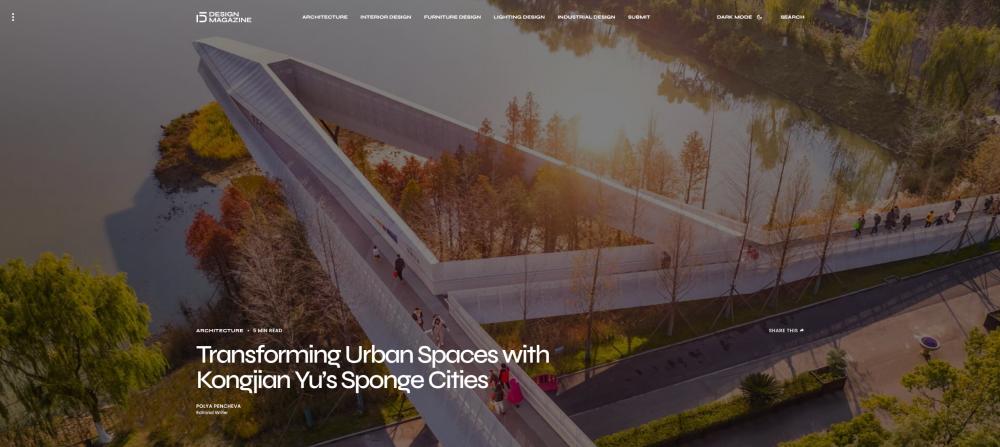
Recently, the Beijing-based landscape architect Kongjian Yu became the recipient of the 2023 Cornelia Hahn Oberlander International Landscape Architecture Prize. The biennial Oberlander Prize includes a $100,000 award and two years of public engagement activities focused on the laureate’s work and landscape architecture more broadly. Yu is the developer of the concept of sponge cities concept for addressing climate change and addressing accelerated urban flooding.
The biennial Oberlander Prize is bestowed on a recipient who is “exceptionally talented, creative, courageous, and visionary” and has “a significant body of built work that exemplifies the art of landscape architecture.”
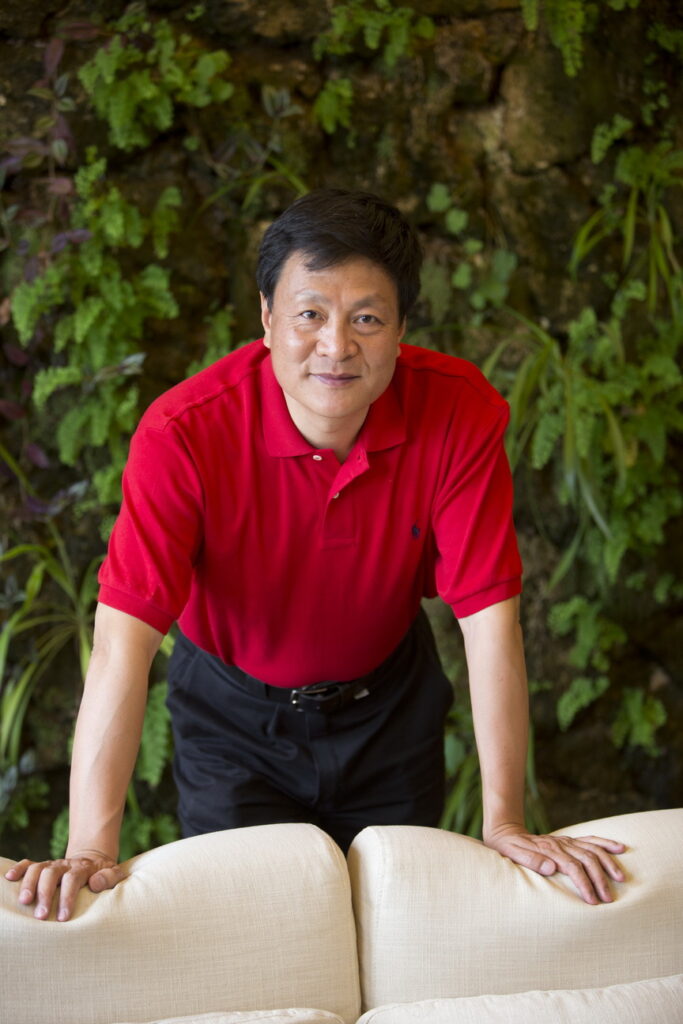
What is the sponge city?
According to Yu, the term sponge city was coined back in 2003. It is based on his lecture directed towards media, television, and the authorities of China. “I told them how we should use natural waterways and wetlands to slow down water and adapt it,” explains Yu. He further adds that fighting against water isn’t a good solution to the issue of flooding.
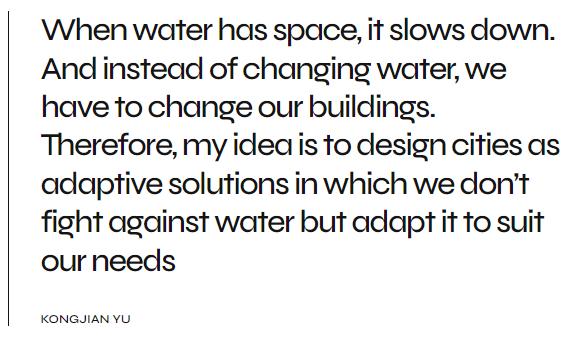
Furthermore, in 2012 Beijing was flooded and 79 people lost their lives. That triggered Yu to write a letter to the authorities and inquire about a different infrastructure. “We needed an alternative to grey infrastructure. And that was a green infrastructure which is practically the sponge city,” adds Yu.

Difficulties and challenges
His approach to the development of these cities was seen as negative. He put first not the infrastructure but the greenery of the towns. Despite the attacks and the legal issues, he faced, eventually the sponge city became a national policy. “I was considered a destroyer,” says Yu. The first changes Kongjian Yu noticed were from the authorities because he had to accept his knowledge. Yu had to educate them to solve their issues by replacing concrete infrastructure with the sponge city concept. “That was an obstacle.”
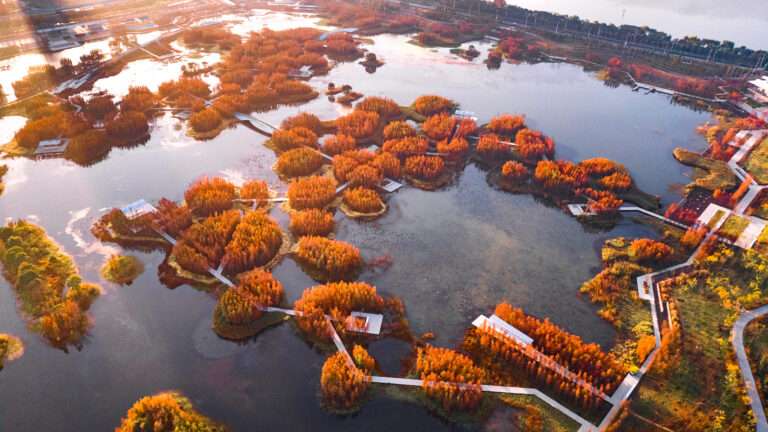
“The mindset of people was a huge problem. This intellectual revolution of fighting against nature instead of living with living with it. Generally, the sponge city concept is based on the ancient wisdom of adapting to the monsoon climate,” says Yu. And while this ancient knowledge Is useful it is not always efficient. The sponge city is inspired by this ancient wisdom. “The sponge city is a combination of science, modern technology, and ancient practice,” says Yu.
With sponge cities instead of draining the precipitation water, it is retained, and this solves the problem of groundwater depletion and groundwater. Drainage systems didn’t handle efficiently the precipitation.
Climate adaptation
The sponge city can not only help reduce floods and improve infrastructure, but it also has an impact when it comes to climate change and climate adaptation to the changes we have been witnessing recently.
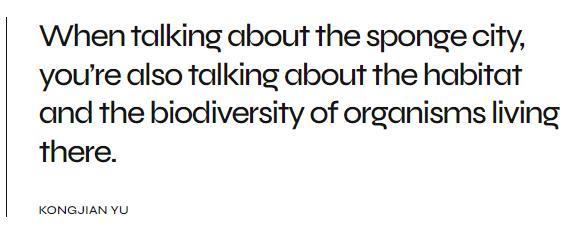
The sponge city according to Yu can mitigate carbon emissions and it is seen as a holistic solution to the problem of floods. In one of Yu’s projects in 2015, for instance, they developed a concept that solved the problem of urban floods. “It also created a beautiful habitat for migrant birds,” says Yu. “Many birds came back to the city,” says Yu. The project also increased the value of the property of the land and attracted many people to visit it.
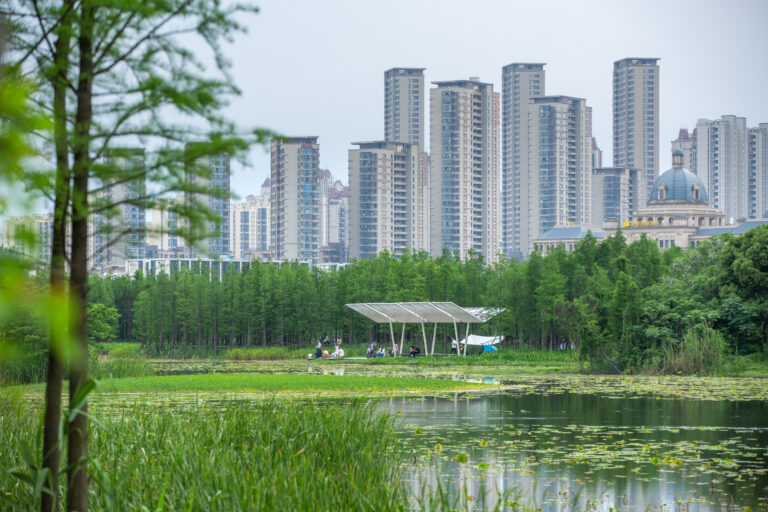
The philosophy behind Kongjian Yu’s work
Yu has learned throughout his years of experience that a city is about design and pattern. “What if you design a pattern that protects nature and allows development,” asks Yu. He studied precisely how to develop projects like this. He explains that this is called a security pattern. “I use a critical system to maximize nature’s success,” adds Yu.
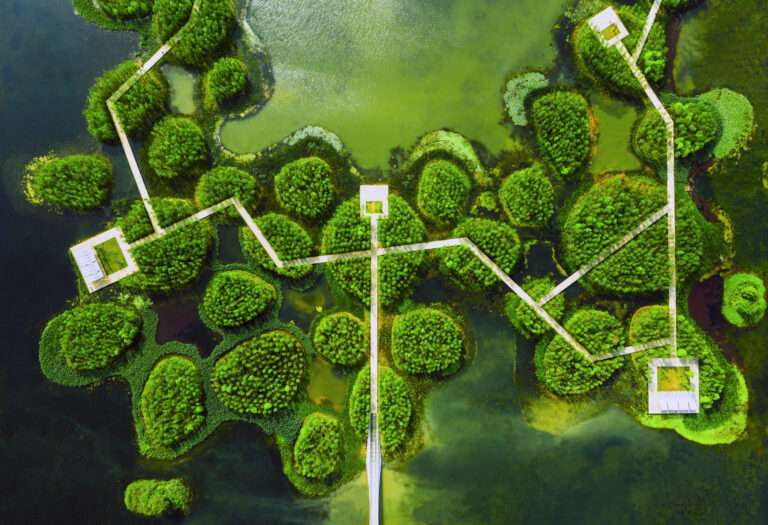
Kongjian Yu’s core belief is that man and nature can harmoniously live together. This philosophy allows for designing ecologically-based projects. “We should have a deep understanding of the natural ecosystem. This means that we need to know how to recycle water and live with many natural processes instead of having a single-minded pattern. This is what I call a lifestyle. Namely using minimal energy and material to have a beautiful life. And the sponge city is a tool for designing cities as part of the natural ecosystem.”
Furthermore, Yu believes that sponge cities are about knowledge sharing. For him, climate change is a sign that we have to change the way we live our lives. And the sponge city happens to be an inexpensive and functional way to reduce the carbon footprint we produce daily. Thinking about the urbanization that happens in densely populated countries requires the development of more buildings. But maybe urbanization needs to happen differently is one of Yu’s reflections.
Cutting carbon emissions is a problem that has been tackled for years now. In 2023, global carbon dioxide emissions from burning fossil fuels are expected to hit record levels. Countries are expected to emit a total of 36.8 billion metric tons of CO2 from fossil fuels in 2023, a 1.1% increase from last year. Sponge cities, in this context, can help further reduce the impact of the alarming global warming temperatures.

Source:https://d5mag.com/transforming-urban-spaces-with-kongjian-yus-sponge-cities/
